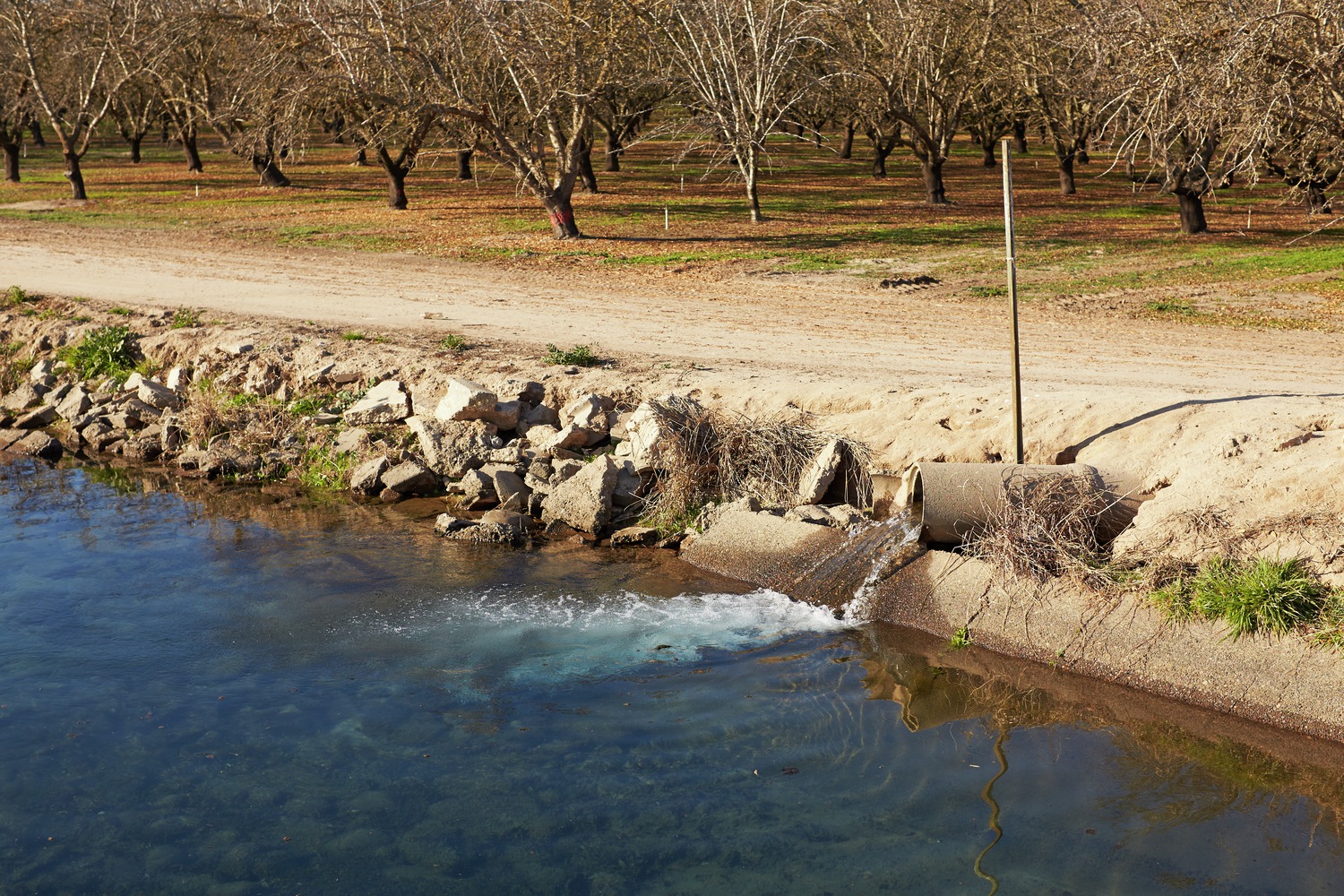
With the sting of California’s latest drought still in memory and the state beginning to clamp down on groundwater use, maximizing every “crop per drop” of water has never been more important. This reality, in fact, helped propel the almond industry to announce its Almond Orchard 2025 Goals – one of which is to reduce the amount of water needed to grow a pound of almonds by an additional 20%.
To achieve that goal and continue improving water use efficiency for years to come, industry members throughout the state will increasingly look to advanced irrigation technology to help adequately address trees’ needs and ensure optimal productivity.
In fact, it’s likely that growers will rely as much on artificial intelligence as they do their own experience: In-field data on soil moisture and texture, spatial variability, and weather information collected by remote sensors or pressure chambers could be combined with aerial imagery that captures plant vigor or water stress to provide real-time analytics on an orchard. Similarly, computer algorithms could help growers make scientifically informed decisions about how much, at what frequency and where to apply water across the orchard. Many of those components are already accessible and being used today in orchards up and down the Central Valley.
Glimpse into the Future
Almond Board of California (ABC) is looking to support the industry in its efforts to implement more advanced technology by helping growers understand how new technology can lead to solutions among other strategies. At the heart of finding and honing in on irrigation solutions are two key factors: the rapid advancement of commercial precision farming technology and an understanding of almond tree growth and what drives yield.
“Smart irrigation management will consist of a combination of hardware and software that will allow almond growers to make precision irrigation decisions,” said Sebastian Saa, Associate Director of Agricultural Research for ABC.
Within the next decade, Saa and ABC’s Senior Manager of Field Outreach and Education Tom Devol foresee growers adopting the following advanced practices and technologies:
- Measuring actual evapotranspiration (ETa) – the amount of water a tree actually uses – to more effectively calibrate irrigation needs.
- Fine-tuning yield forecasts to create more precise irrigation plans that determine how much water is needed to maximize production.
- Applying different volumes of water to be applied in different parts of the same orchard via improved technology.
- Implementing additional improvements in water use efficiency due to Sustainable Groundwater Management Act (SGMA) factors.
Devol said that while many growers already use some form of today’s irrigation technology[ii], enhancements in software and standardization of certain metrics will make it easier to aggregate and analyze the data to better support an orchard’s needs.
“There are pieces of the larger irrigation improvement puzzle being implemented now in different forms,” he said. “For instance, remote imagery is becoming more common. There are a number of companies that provide that service – they send satellite images to growers every couple of weeks.”
The Role of Research
For nearly 50 years, ABC has been investing in irrigation-related research, recognizing the role growers must play in sustainably managing water resources in California. In the last five years alone, ABC devoted almost $4 million to irrigation research, encompassing 21 projects (eight of which are ongoing.)
“We seek to play a catalytic role in how irrigation in the orchard of the future evolves, connecting the expertise we have supported through public sector research with the growing arena of commercial technology innovation,” Saa said. “We expect this to result in the development of better instruments, software and hardware that provide a more reliable and user-friendly experience by really understanding the almond ecosystem.”
Saa said grower-related data on irrigation techniques and water use provided through ABC’s California Almond Sustainability Program (CASP) is critical for researchers as well as the companies who make irrigation equipment as it provides insight into what practices growers are conducting and what tools they’re using to do so.
The data also influenced multiple discussions among ABC’s Irrigation, Nutrients and Soil Health Workgroup members, who identified several factors that must occur in order for the orchard of the future to take shape. Elements that are outlined in ABC’s Strategic Plan on Irrigation:
- Growers must be less confined by water district schedules that influence when and how much water is available, as these schedules limit the flexibility of scheduling and can affect the feasibility of variable fertility application.
- Utility companies compel growers to schedule irrigation around off-peak times for economic reasons. This can strain the ability to meet water demands during the hottest time of year, when the trees have higher water requirements than other times of the year.
- Growers would benefit from having better recommendations on when to start irrigating (in early spring) and when to stop irrigating (by the end of the growing season).
- The industry’s low adoption of pressure chamber use demonstrates the need for more user-friendly devices that provide data on plant water status.
ABC’s Irrigation, Nutrients and Soil Health Workgroup members charted a research path that focuses on ETa, the continued development and application of remote sensing technology, and improved methods to measure spatial variability.
“We’re also interested in finding the breaking point between tree water demand and the tree energy needed to support predicted yield early in the season,” Saa said. “We envision that the results in this area will provide the means to make decisions on how much to irrigate given a certain crop load and thus translate into water-saving capabilities.”
Growers interested to learn more about the work of ABC’s Irrigation, Nutrients and Soil Health Workgroup are invited to attend an upcoming meeting. Visit Almonds.com/Events for meeting information.

References:
1) University of California, 2010. Food and Agriculture Organization of the United Nations, 2012. Almond Board of California, 1990-94, 2000-14.
2) 2019 California Almond Sustainability Program (CASP) data.















